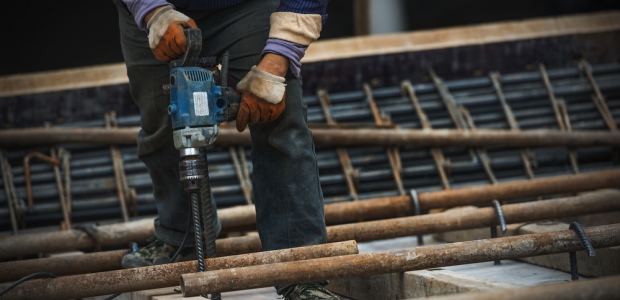
AGC Backs Funding for Technical Training
"With overall unemployment now at the lowest level in nearly 50 years, contractors are having an ever harder time finding workers with or without construction experience," said Ken Simonson, AGC's chief economist. "Average pay in construction is more than 10 percent higher than in the private sector as a whole, but job openings in the industry keep climbing."
The Associated General Contractors of America reported May 3 that its analysis of federal data indicates construction employment rose by 33,000 jobs in April and has increased by 256,000, or 3.5 percent, in the past 12 months, and that the number of unemployed job seekers with construction fell to a record low for April. AGC officials said the unavailability of experienced construction workers shows why initiatives to expand opportunities for construction careers should be included in federal infrastructure funding legislation.
"With overall unemployment now at the lowest level in nearly 50 years, contractors are having an ever harder time finding workers with or without construction experience," said Ken Simonson, AGC's chief economist. "Average pay in construction is more than 10 percent higher than in the private sector as a whole, but job openings in the industry keep climbing."
Associated Builders and Contractors, Inc. also took note of the BLS data showing year over year job growth of 256,000 construction jobs. "Many economists are predicting a recession in 2020 or 2021," said ABC Chief Economist Anirban Basu. "While that's possible, the case for an economic downturn over the next 12 to 18 months is fading fast. The nation has added jobs in 103 consecutive months, and the unemployment rate is at its lowest level since 1969. With inflation and interest rates low, the cost of capital remains suppressed, helping to induce ongoing spending growth among companies, consumers, and governments alike. Corporate earnings remain strong, and today's employment report indicates that many remain firmly in growth mode."
The unemployment rate for job seekers who last worked in construction declined to 4.7 percent from 6.5 percent in April 2018, and the number of those workers fell from 623,000 to 439,000 year over year. The rate and number who were unemployed were the lowest for April since the series began in 2000, Simonson said, who also said another government series showed the number of job openings in construction, last reported for February, totaled 286,000, the highest February total in the 19-year history of that series.
He said the numbers, including for average salaries, are "consistent with the message we keep hearing from contractors that finding qualified workers keeps getting harder." AGC released a survey in January in which 78 percent of contractors reported they were having trouble filling some positions and 68 percent said they expected that hiring would remain difficult or become harder.
AGC is urging federal officials to include initiatives to expand career and technical education in any infrastructure bills. "Including funding for new career and technical education training in a new infrastructure measure will help ensure that the measure creates a significant number of new, high-paying, construction jobs," said Stephen E. Sandherr, the association's CEO. "These new jobs will significantly benefit the economy, as will the increased efficiencies that come with improving aging and over-burdened infrastructure."